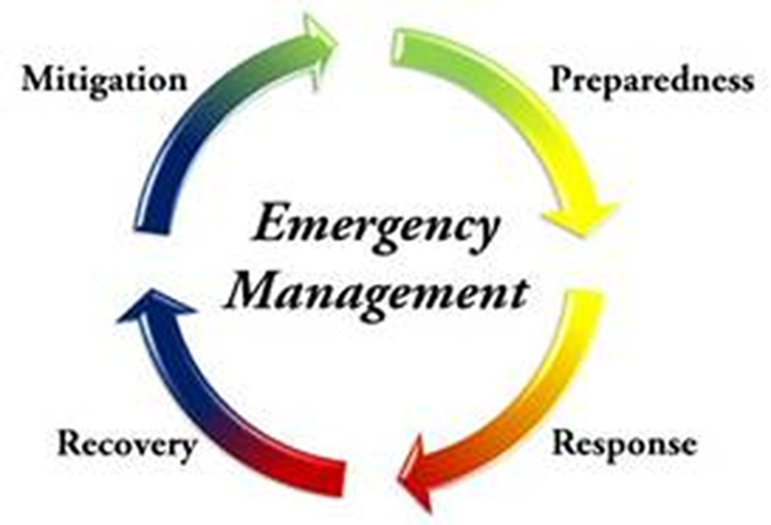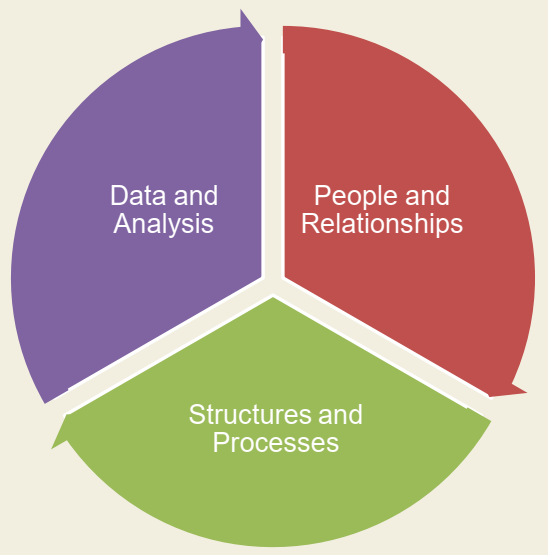Introduction
Emergency management is one of the most critical responsibilities of the government. According to Haddow, Bullock, and Coppola (2014), emergencies may arise because of a wide range of factors, but consequences tend to be identical. Some may be caused by human error or acts of terror while others may be attributed to natural disasters. Irrespective of the cause of an emergency, the most important thing is the ability of the relevant agencies to respond within the right time to save lives and property. The Qatar Civil Defence Department is responsible for managing different types of risks. It must deal with emergencies such as fire outbreaks, major flooding, and other major natural disasters. The ability of this department to achieve its strategic goals depends on its understanding of its mandate, availability of skilled workers, adequate resources, and goodwill among top managers. The report focuses on aspects of preparing for major incidents with a primary emphasis on mitigating the consequences of such emergencies. The report is expected to be of benefit to the Qatar Civil Defence Department with the primary aim of improving the agency’s efficiency. The primary objectives are to identify the changing hazards and develop ways through which this department can respond to them effectively as the country prepares to host the 2022 World Cup.
Scope
The primary focus of this paper is to determine how the Qatar Civil Defence Department can mitigate the consequences of stadium collapse that may occur during the upcoming major football tournament. The department should be properly prepared to achieve success in such endeavors. It should have the right resources needed to manage a possible collapse of a football stadium during the tournament (Sylves 2015). This department needs to focus also on identifying new or changing hazards and threats from both local and wider environments. Other than the threat of stadium collapse which is the main focus of this paper, issues such as the threat of terror attack or actions of extremist groups, cyber-attacks and national border infiltration, climate change, regional political tension, and other legal concerns should be taken seriously. It may be necessary to take train employees for them to understand these emerging threats. However, dealing with regional political rivalries is beyond the scope of this paper. Although a potential attack by foreign forces is a real and serious threat to the national security in the country, the topic may need to be considered by future researchers.
Analysis
Preparing for a major disaster is one of the most important aspects of mitigation. Qatar is currently preparing to host the 2022 FIFA World Cup and various emergencies may arise in the construction sites or other parts of the country. The Qatar Civil Defence Department should be fully prepared to deal with these emergencies to protect lives. The task may be overwhelming, especially in the period leading to and during this major global sporting event. The following are the potential risks that this department should be ready to deal with:
- The collapse of a stadium
- Terror attack
- Food poisoning
- Fire outbreak
- Robbery
- Attack by football fanatics
- Slips and falls
- Extreme weather
- The inability of shopping malls to meet demand
- Smuggling of drugs among visitors
It will be necessary to use the 5WH methodology when assessing and mitigating the consequences of risks involved, which in this case is a possible stadium collapse. The paper will explain (Why) I need to work on improving the security of (Where) the stadium in the country, (What) equipment is needed for mitigation in case of a collapse, (When) to start evacuation and treatment of the injured people, (Who) should be involved, and (How) to recover.
Risk Assessment
One of the most important stages in risk mitigation is the assessment process. Johnson, Scholes, and Whittington (2005) explain that when assessing risks, of interest should be to determine the likelihood of its occurrence and the possible consequences. The risk matrix makes it easy to classify various risk factors based on the magnitude of their effect and likelihood of their occurrence, as shown in Table 1 below. Stadium collapse happens to fall in that region.
Table 1: Risk Matrix.
The Risk Management Process
In this section, the focus will be on the explanation (Why) it is necessary to manage the security of (Where) the stadiums within the country during the 2022 FIFA World Cup. One of the main goals of hosting this football tournament is to attract regional and global tourists and investors by displaying beautiful amenities and business opportunities. The occurrence of a disaster such as a stadium collapse may overshadow such efforts. It will create negative memories in the minds of the visitors, making it unlikely that they may want to visit this country again. These are the reasons why it is important to ensure that stadiums’ safety is guaranteed.
According to Yukl (2006), the risk management process can be evaluated in four different steps, as shown in figure 1 below. The first step is disaster preparedness, which involves various activities undertaken to ensure relevant resources and training are achieved in readiness for risk occurrence (Myers 1999). The relevant department not only needs to have access to the resources but also equip the personnel with needed skills at this stage. The next step is the response. In case of risk occurrence, the emergency management department is expected to act appropriately to deal with the situation to eliminate the loss of human lives and destruction of properties as much as possible. The third stage is recovery where the team will take various actions meant to return the affected entity to normalcy, especially if it is a government unit. For private entities, insurance companies often help in addressing the loss and supporting the recovery process. The last stage is mitigation. After witnessing such incidents, all stakeholders involved should take specific actions that would lessen the severity of the impact of similar incidences.

Roles and Responsibilities of Each Attending Agency
In this section, the focus is to explain (Who) should be involved in mitigating the consequences of a stadium collapse. Qatar Civil Defence Department is directly responsible for emergency management and response within the country (Sylves 2015). The department has four main agencies that work closely to ensure that various threats to national security are dealt with effectively. The Operations Department is directly responsible for the response and disaster management. When there is an emergency such as a stadium collapse, it is the responsibility of this agency to respond and offer the needed help. The Prevention Department works with all relevant stakeholders to help prevent occurrences of various risks (Adair 2005). They supervise both public and private entities to ensure that they adhere to the set rules and regulations.
The Logistics Department is responsible for availing the needed resources that facilitate an effective response to various risk factors. The department must understand (What) equipment is needed for mitigation in case of a stadium collapse. The heavy earth-moving equipment, ambulances, and highly skilled paramedics must be provided by the agency. The fourth agency is the Administrative Affairs Department. It coordinates the activities of all other departments and ensures that strategic goals and objectives of the directorate are attained.
Strategic Management Process within Qatar Civil Defence Department
Qatar Civil Defence Department has many responsibilities, the top of which is fire and rescue service. As the population in major cities continues to increase, the department needs to ensure that it is fully prepared to respond to a fire outbreak and incidences that require rescuing civilians. Planning is critical in ensuring that success is achieved. During the planning stage, the SWOT management model, shown in figure 2, will be of great importance (Moore & Lakha 2006). The management will need to identify its areas of strength that can enhance success while, at the same time, determining weaknesses that must be addressed. The directorate will also need to identify external opportunities such as emerging technologies that may improve service delivery as well as threats such as poor roads that may hamper an effective response to emergencies. As Buchanan and Huczynski (2004) note, factors in the SWOT model often change with time-based on environmental forces.

How the Strategic Objectives Are Used by the Fire and Rescue Service to Analyse, Manage and Improve Service Performance
The strategic objective is set by the fire and rescue service to maintain efficiency and effectiveness when responding to emergencies. The objective should explain (How) to recover in the event of a collapse of a stadium. The goal is to minimize casualties and damages as much as possible. As such, the response to such an emergency should be swift and effective. It was meant to ensure that the department is capable of responding to emergencies effectively and within the right time. Using this objective, this firm can analyze its current abilities to determine if it is capable of meeting the goal. In case inadequacies are identified, the management will need to eliminate them to enhance the performance capacity of the fire response unit to improve service performance. Figure 3 below identifies three factors that should be considered in managing and improving the performance of the unit. People and relationships are critical for any organization. Having a skilled and experienced team that appreciates the significance of maintaining positive relationships is crucial. The team should have access to information (data and analysis) that directs every action they take. Finally, structures and processes should be defined in clear terms to help realise organizational goals and objectives.

Principles, Preparation, Management and Implementation of Integrated Risk Management Plans
The Qatar Civil Defence Department will need to embrace specific principles in its preparation and management of various risks. According to Laurie (2005), one of the cardinal principles that must be embraced by the emergency and rescue team is the preference for life. The team must ensure that every time they are called upon to address a given emergency, the priority should always be to save as many lives as possible. It means that the team should understand (When) to start evacuation and treatment of the injured people. Sylves (2015) explains that the evacuation and treatment of the injured should start as soon as possible.
The least harm possible principle should also be cherished. It is meant to ensure that the response team is not subjected to harm when trying to help others or save properties. The implementation of a risk management plan (IRMP) is critical in the preparation and management of various risk factors. The IRMP helps in identifying the right team of experts, resources needed, best practices when responding to different risks, and an appropriate coordination plan among all stakeholders involved. The plan also helps in classifying various risk factors, as discussed above. The risk-rating matrix identifies four classes of risks (very high, high, medium, and low). Emphasis should always be placed on high impact/high likelihood risks. When it comes to responding to various risks, priority should be based on this classification.
Conclusion
The Qatar Civil Defence Department has an important responsibility of ensuring that civilians are protected from all forms of disasters. Findings show that risk factors continue to evolve and it may not be easy to predict precisely when or how they will occur. However, it is critical to prepare for their occurrence. The study shows that the management of this entity must provide all the resources needed during the preparation stage. It is also necessary to take employees through a rigorous process of training to ensure that they understand what is expected of them. Using different models such as SWOT analysis helps in evaluating core competencies, opportunities that should be embraced, and threats that need to be dealt with to achieve the desired goals. During the preparation stage, various risk factors should be classified in order of priority and complexity. Classification helps the response team to know how and when it is appropriate to take proper actions.
Recommendations
The population of Qatar is growing rapidly and the Qatar Civil Defence Department must improve its ability to respond to various forms of emergency within the right time. The management of this department should consider the following recommendations:
- The management of the Qatar Civil Defence Department should take its personnel through thorough training within the next two years to equip them with disaster response and management skills. They should be ready to respond to cases of stadium collapse.
- The department should set aside about 180 million Qatari riyals specifically to purchase equipment and train its staff on disaster response and management. The cost incurred for the preparation may be high, but it will have long-term benefits to the country.
- The department should understand and embrace best practices within the industry. It should be familiar with new practices used in other countries to manage fire, flooding, and other forms of emergencies.
- There should be a proper communication system within the firm to facilitate the coordination of various activities. Emerging technologies in the field of information and communication should not be ignored.
- Retaining top talents should also be considered part of the preparation. Such employees should be properly remunerated to ensure that they do not consider quitting this department.
Reference List
Adair, J 2005, The John Adair handbook of management and leadership, Thorogood, London.
Buchanan, D & Huczynski, A 2004, Organizational behaviour: an introductory text, Pitman Publishing, London.
Dillon, B 2009, Emergency planning officers’ handbook, Oxford University Press, Oxford.
Haddow, G, Bullock, J & Coppola, D 2014, Introduction to emergency management, Butterworth-Heinemann, Waltham, MA.
Johnson, G, Scholes, K & Whittington, R 2005, Exploring corporate strategy, 7th edn, Prentice Hall, New York, NY.
Kaplan, L 1996, Emergency and disaster management planning, McGraw Hill Professional, New York, NY.
Laurie, J 2005, Management and organisational behaviour, 7th edn, Pearson Education Ltd, London.
Moore, T & Lakha, R (eds.) 2006, Tolley’s handbook of disaster and emergency management, 3rd edn, Elsavier, Burlington, MA.
Myers, K 1999, Managers guide to contingency planning for disasters: protecting vital facilities and critical operations, 2nd edn, John Wiley & Sons, Hoboken, NJ.
Sylves, T 2015, Disaster policy and politics: emergency management and homeland security, 2nd edn, SAGE Publication, New Delhi.
Yukl, G 2006, Leadership in organisations, 6th edn, Pearson Prentice Hall, Upper Saddle River, NJ.